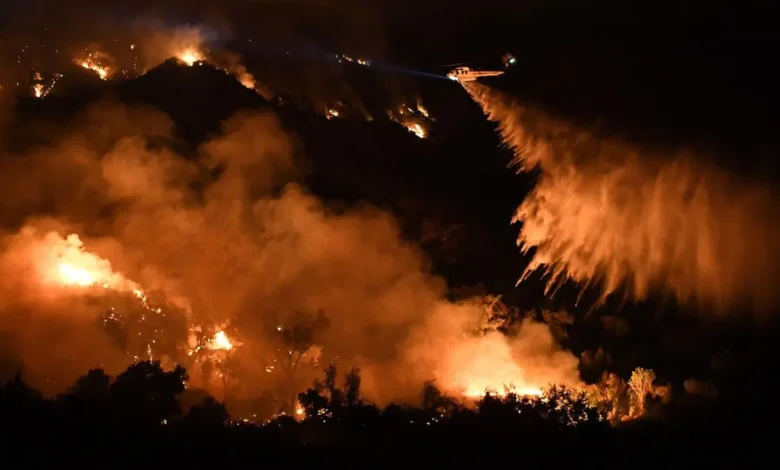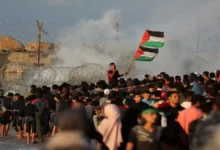Santa Clarita Fire: The Flames That Changed a Community

Introduction to the Santa Clarita Fire
The Santa Clarita fire is a powerful reminder of the devastating impact that wildfires can have on a community. Nestled in Southern California, Santa Clarita has long been a picturesque area boasting beautiful landscapes, rolling hills, and an ever-growing suburban feel. But like many places in California, this city is not immune to the dangers of wildfires. When the Santa Clarita fire raged through the area, it left scars that the community will remember for years.
Fires in California have become almost synonymous with the state’s natural cycle, but for the people living in Santa Clarita, each wildfire is a fresh and often terrifying experience. These events threaten homes and property and pose severe risks to lives and livelihoods. While the Santa Clarita fire may be one of many wildfires that have swept across the region, its impact was deeply felt, marking a significant moment in the area’s history.
Residents, firefighters, and city officials had a front-row seat to nature’s destructive power. Still, it was also a time that highlighted the community’s resilience and unity. The Santa Clarita fire tested the city’s preparedness, showcasing how quickly people can come together in the face of disaster.
The Causes of the Santa Clarita Fire
Wildfires are common in California, and their causes can be varied. In the case of the Santa Clarita fire, multiple factors contributed to the outbreak. Like most wildfires in the region, environmental conditions and human activity led to the flames spreading rapidly across the area.
The dry, hot weather is a primary factor contributing to wildfires in Southern California. Like much of the region, Santa Clarita experiences long periods of drought. These dry conditions turn vegetation into fuel, creating a perfect storm for wildfires. When the winds pick up, as they often do in the area, a tiny spark can quickly turn into a raging inferno.
Human activity also plays a significant role in starting fires. Whether it’s a discarded cigarette, an illegal campfire, or even electrical equipment malfunction, the causes of these fires are often preventable. The Santa Clarita fire was no exception, as investigators determined that human negligence may have played a role in ignition. While unintentional, the consequences were devastating for the community.
The Spread and Impact of the Fire
Once a fire starts in dry, windy conditions, its spread can be alarmingly fast. This was the case with the Santa Clarita fire. As the flames moved through the landscape, they consumed everything – homes, businesses, and even parts of the natural landscape that residents cherished. The rapid spread of the fire forced evacuations and caused widespread panic as people rushed to protect their families and belongings.
The fire destroyed the ground and created a massive plume of smoke that could be seen for miles. As ash and debris filled the sky, air quality in the surrounding areas plummeted, making breathing difficult for people, especially those with respiratory conditions. The spread of the Santa Clarita fire highlighted just how quickly a natural disaster can turn a community upside down.
In addition to the physical destruction, the psychological impact of the fire on residents cannot be understated. Many people lost everything they owned in a matter of hours, while others were left to wonder if their homes would survive the night. The fear and uncertainty of wildfires are as much a part of the disaster as the flames themselves. The emotional toll on the community was immense, with families displaced and neighborhoods left in ruins.
The Heroic Response of Firefighters

Amidst the chaos of the Santa Clarita fire, there were countless stories of bravery and heroism. At the heart of the firefighting efforts were the dedicated men and women who risked their lives to contain the blaze and protect the community. Firefighters across the state were deployed to Santa Clarita, working around the clock to battle the flames.
Fighting a wildfire is challenging, especially in the rugged terrain of Southern California. The intense heat, unpredictable winds, and dry vegetation made the Santa Clarita fire particularly dangerous. Yet, despite the challenges, firefighters made significant progress in containing the fire and preventing further destruction.
The firefighters’ efforts were not without sacrifice. Many of them worked long shifts, often going days without sleep, to keep the fire from spreading to more populated areas. Their courage and determination were crucial in saving countless homes and lives. The community of Santa Clarita will never forget the heroic efforts of these individuals who stood on the front lines during one of the most dangerous fires in the area’s history.
The Role of Technology in Fighting the Fire
Technology played an essential role in the fight against the Santa Clarita fire. Over the years, advancements in firefighting equipment and techniques have made it easier for firefighters to combat wildfires, even in the most challenging conditions. From aerial drones to high-tech fire retardants, these tools were instrumental in the firefighting efforts during the Santa Clarita blaze.
One of the most effective tools used during the fire was aerial support. Helicopters and planes equipped with water and fire retardants made multiple trips over the fire, dousing the flames and helping to control the spread. These aerial resources were critical in reaching areas difficult for ground crews to access.
Another critical aspect of the firefighting efforts was using real-time data to track the fire’s movement. Drones equipped with thermal imaging cameras provided crucial information to firefighters, allowing them to predict where the fire was headed and make strategic decisions on how to contain it. This technology helped save valuable time and resources, ultimately preventing further destruction.
Evacuations and Community Response
One of the most challenging aspects of any wildfire is the need for rapid evacuations. In the case of the Santa Clarita fire, thousands of residents were forced to leave their homes with little notice. Evacuation orders were issued as the fire spread, with authorities urging residents to pack their essentials and leave immediately.
For many, the evacuation process was chaotic. With the fire threatening multiple neighborhoods, traffic quickly became congested as people scrambled to escape harm’s way. Despite the confusion, most residents heeded the evacuation orders and left their homes orderly.
The community’s response to the fire was nothing short of remarkable. Neighbors helped neighbors, offering rides to those without transportation and assisting with evacuating pets and livestock. Local organizations quickly mobilized to provide shelter and resources to evacuees, while volunteers offered their time and support to those in need.
The evacuation process also underscored the importance of emergency preparedness. The fire was a wake-up call for many residents, prompting them to reevaluate their emergency plans and ensure that they were better prepared for future disasters.
Recovery and Rebuilding Efforts
After the flames were extinguished, the real work of recovery and rebuilding began. The Santa Clarita fire left behind a trail of destruction, with homes reduced to ashes and businesses severely damaged. The road to recovery was long and difficult for those affected by the fire.
In the weeks and months following the fire, local and state agencies worked to assist residents who had lost their homes. Relief efforts included financial aid, temporary housing, and support for rebuilding. The community came together in various ways, with donations from across the region to help those displaced by the fire.
Rebuilding after a wildfire is a complex process; for many, it took years to recover fully. Insurance claims, permits, and the sheer emotional toll of starting over made the process slow and often frustrating. However, the resilience of the Santa Clarita community was evident as they worked together to rebuild their homes and lives.
Environmental Impact of the Santa Clarita Fire
Wildfires profoundly impact the environment, and the Santa Clarita fire was no exception. The fire not only destroyed homes and businesses but also significantly affected the natural landscape. Large swathes of vegetation were burned, leaving the once-green hillsides charred and barren.
The environmental impact of the fire extended beyond the immediate destruction of plant life. The loss of vegetation increased the risk of soil erosion, particularly in the months following the fire when rains could wash away the exposed soil. This erosion threatened local waterways, as sediment could clog streams and rivers, affecting water quality and local wildlife.
In addition to soil erosion, the Santa Clarita fire also contributed to air pollution. The thick smoke that filled the air during the fire contained harmful particles that affected air quality in Santa Clarita and surrounding areas. Residents were advised to stay indoors for days to avoid breathing in the hazardous air.
The environment’s recovery after a wildfire can take years, but nature is remarkably resilient. Over time, the landscape will regenerate, with new growth emerging from the ashes. However, the long-term effects of the fire on local ecosystems will be felt for years to come.
Lessons Learned from the Santa Clarita Fire
Like many wildfires, the Santa Clarita fire served as a stark reminder of the importance of preparedness and the need for ongoing efforts to mitigate the risk of future fires. For residents, the fire highlighted the importance of having an emergency plan in place and being ready to evacuate at a moment’s notice.
For city officials and emergency responders, the fire underscored the need for continued investment in firefighting resources and technology. The quick response from firefighters was instrumental in containing the fire, but the event also revealed areas where improvements could be made regarding evacuation procedures and communication.
The Santa Clarita fire also prompted discussions about the role of climate change in the increasing frequency and intensity of wildfires in California. As temperatures rise and droughts become more common, the risk of wildfires continues to grow. This has led to renewed efforts to address and implement policies to reduce climate change.





